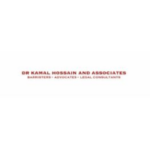-
Is your jurisdiction a common law or civil law jurisdiction?
England and Wales is a common law jurisdiction. Statutes are enacted by Parliament and then clarified by judgments of the higher courts, which are followed by the lower courts using the system of precedent. The law of England and Wales is often referred to as English law. (Scotland and Northern Ireland have their own court systems and laws, which are outside the scope of these answers).
-
What are the key statutory/legislative obligations relevant to construction and engineering projects?
There are a myriad of statutory obligations relevant to construction and engineering projects. This section will focus on the legislation relevant to the design and construction elements of a construction project. Please also see question 3.
Payment, disputes and tax
The most significant legislation to be aware of is the Housing Grants, Construction and Regeneration Act 1996 and related secondary legislation (HGCRA).
The HGCRA prescribes an interim payment mechanism (see answer to question 14) and provides a right to refer any dispute to adjudication (with a default timetable of 28 days although this timeframe can be extended) for most UK construction projects. It also provides that a party that has not been paid may suspend work until it is paid. The intention of these measures is to increase cash flow in the construction industry. Parties may not contract out of these obligations.
The Late Payment of Commercial Debts (Interest) Act 1998 inserts an implied interest clause into most business to business contracts for the supply of goods or services. This provides for simple interest by adding 8% to the Bank of England’s official Bank Rate. The statutory rate of interest will apply when the contract is silent. It will also apply if the contract specifies an interest rate which does not constitute an alternative “substantial contractual remedy” for late payments.
The Income Tax (Construction Industry Scheme) Regulations 2005 (as amended) is a tax deduction scheme which sets out rules for how payments to subcontractors for construction work must be handled by contractors in the construction industry.
Carrying out the works
Building work must be carried out so that it complies with the Construction (Design and Management) Regulations 2015 which govern health and safety conditions on site and affect most UK construction projects. Their main purpose is to ensure that the employer appoints competent consultants and contractors, including a “Principal Designer” and “Principal Contractor”.
Building work must also be carried out in compliance with the Building Regulations 2010 which set out the standards for the design and construction of buildings to ensure the safety and health of people in or around the completed works. These Regulations also require the employer to appoint competent consultants and contractors, including a “Principal Designer” and Principal Contractor”, in addition to the CDM Principal Designer and CDM Principal Contractor referred to above.
For the creation of new dwellings or when carrying out works to existing dwellings, the Defective Premises Act 1972 implies a condition that the dwelling, when completed, will be reasonably fit for human habitation. This obligation cannot be excluded by contractual drafting.
The Building Safety 2022 Act and subordinate legislation introduce significant changes in respect of “Higher-Risk Buildings” (HRBs) – these include the introduction of a new regulator (the Building Safety Regulator), changes to the applicable building control process, new operational requirements before the building is occupied, a new golden thread requirement and provisions to address and deal with remediation of “defects”. There has been a lot of commentary around the additional time the new process takes for HRBs compared to the traditional building control route and the additional time and cost of this process need to factored into projects.
Finally, there is a raft of consumer legislation which implies various terms into construction contracts. This includes the Supply of Goods and Services Act 1982 and the Consumer Rights Act 2015 which contain obligations on parties providing goods and services that goods must be fit for purpose, and services must be carried out with reasonable skill and care. Since construction services combine goods and services, a contractor is thought to owe an obligation to construct a building that is fit for purpose. However, a consultant providing professional services only, must provide these with reasonable skill and care. Parties may vary these obligations by contract.
Requirements for “public contracts”
The majority of the Procurement Act 2023 (PA) which consolidates existing procurement rules under a single legal framework came into force on 24 February 2024.
If a construction contract falls within the PA’s remit then it must conform with its requirements. Requirements include the inclusion of payment and termination provisions in the contract; failure to include results in their implication in any event. Other requirements include the inclusion of key performance indicators and restrictions on contract variation and the publication of various notices. See also questions 9 and 14.
-
Are there any specific requirements that parties should be aware of in relation to: (a) Health and safety; (b) Environmental; (c) Planning; (d) Employment; and (e) Anti-corruption and bribery.
(a) Health and safety
Health and Safety legislation (and the potential issues which may arise) continues to be both an important consideration in and play an important role in construction projects. The duties which it imposes are important to understand and specifically what may be required to discharge obligations, especially on complex developments. Whilst the regime is still underpinned by the Health and Safety at Work Act 1974, which sets out the main general health and safety duties of a company, its directors, managers and employees, there are a myriad of regulations made under the Act which may either directly apply to most if not all construction projects (such as the Construction (Design and Management) Regulations 2015) or to specific tasks or activities (such as working from height).
Individual director and company officers can be held criminally responsible in specific circumstances for health and safety offences (the courts may impose a penalty of imprisonment for certain offences). Under the Corporate Manslaughter and Corporate Homicide Act 2007 companies can be convicted of corporate manslaughter (where the cause of the death was linked to a health safety failing).
The regulators who oversee this legislation have significant enforcement powers and where a successful prosecution is brought then for most offences there is no upper limit to the fine which a court may impose. The key regulator is the Health and Safety Executive (HSE) which is also effectively the Building Safety Regulator too. Now that the Grenfell Phase II report and recommendations have been published (and overwhelmingly accepted by the UK Government) it will be interesting to see what impact (whether direct or indirect) this may also have on health and safety obligations for HRBs.
A failure to properly consider these requirements and obligations which arise is likely to have significant adverse consequences for any construction projects.
(b) Fire Safety
Fire Safety legislation is also equally important in the context of construction projects, not least where certain works are taking place. There are several sources of obligations, some of which are not immediately obvious. The Regulatory Reform (Fire Safety) Order 2005 is a key source of direct obligations and requirements (albeit largely dealing with operational issues and activities as opposed to detailed design requirements) and contains enforcement powers, including service of notices, and sets out criminal offences which arise where obligations are breached.
However, beyond the 2005 Order, the Building Act 1984 and more specifically the Building Regulations 2010 address certain fire safety requirements for buildings. In particular, Part B of Schedule 1 of the 2010 regulations sets out the functional requirements in relation to fire safety and these regulations are also the source of the requirement to provide fire safety information (typically set out in a “fire strategy document” ).
There have also been operational changes to the requirements for certain information which must be kept on HRBs and changes to when second staircases may be required to be installed. Again, the Grenfell Tower Phase II report made various recommendations, not least to utilise the services of qualified fire engineers and the importance of fire engineered solutions.
(c) Building Safety
The issue of building safety continues to be a key topic, not least since the introduction of the Building Safety Act 2022 and the various pieces of secondary legislation which followed. For further detail on this regime, please see question 2.
(d) Environmental issues
Most environmental legislation in the UK originally derived from the EU, but as the post-Brexit environmental law regime continues to emerge there are some areas where the UK is exploring divergence from EU law. The main environmental law regimes address contaminated land, water pollution, nuisance, permitted emissions and discharges, waste, asbestos, hazardous substances, the EU and UK Emissions Trading Scheme, various energy efficiency measures and protection of biodiversity, habitats and wildlife and climate change and nature. In recent years, more legislation has been enacted in both the UK and the EU, imposing obligations on large companies to report on their environmental, social and governance (ESG) impacts.
BREEAM is the Building Research Establishment’s Environmental Assessment Method, which sets best practice standards for the environmental performance of buildings through design, specification, construction and operation. Although not compulsory, many developers, local planning authorities and government projects may require BREEAM certification (or equivalent) for new or refurbished buildings.
(e) Planning
Any “development” of land under the Town and Country Planning Act 1990 (including a change in use) requires planning permission.
Applications must be submitted to the local planning authority or the Secretary of State. An application must be decided within 8, 13 or 16 weeks depending on the nature of the development and whether an environmental impact assessment is required. If granted, planning permission may be subject to certain conditions, obligations or a “community infrastructure levy”.
If planning permission is refused, the applicant has the right of appeal. A grant of planning permission cannot be appealed, but a defective decision can be challenged by way of judicial review.
Planning applications for “nationally significant infrastructure projects” are examined by the Planning Inspectorate, which provides a recommendation to the Secretary of State as to whether a development consent order (DCO) should be granted. Certain developments have their own hybrid Act of Parliament, such as the Crossrail Act 2008.
(f) Employment
Subcontracting is commonplace throughout the construction industry and subcontractors are generally accepted to be independent contractors rather than employees. A contractor may not normally have vicarious liability for the negligence of a subcontractor where it carries out the work for which it was engaged, unless, exceptionally, it can be shown that there was a relationship analogous to employment.
Where a developer changes contractor, brings the work in-house or outsources works and services, the Transfer of Undertakings (Protection of Employment) Regulations 2006 (as amended) (TUPE) may apply. If they do apply, employees automatically transfer across into the employment of the transferee on their existing terms and conditions of employment, there are obligations to inform and consult with representatives, and employees have enhanced protection against dismissal.
The Modern Slavery Act 2015 requires large commercial organisations operating in the UK with a turnover of £36 million to prepare an annual statement setting out what steps have been taken to ensure that their business and supply chain are free from slavery and human trafficking.
(g) Anti-corruption and bribery
The Bribery Act 2010 captures offences committed by anyone inside the UK, and people or companies with a close connection with the UK.
The four main offences are bribing another person, being bribed, bribery of a foreign public official, and failure of a commercial organisation to prevent bribery. Where the Act is breached, the consequences can include potentially unlimited fines, up to ten years’ imprisonment, and debarment from competing for public contracts.
-
What permits, licences and/or other documents do parties need before starting work, during work and after completion? Are there any penalties for non-compliance?
Parties typically need planning permission; Building Regulations compliance; approval from either a local authority building control body or, in the case of HRBs, the Building Safety Regulator under the Building Regulations; and, if required, environmental permits. Further licences and permits may be required if works will affect public areas, such as roads. The Highways Act legislation contains a number of obligations which may be relevant in that regard. There may also be local byelaws which need to be taken into account.
The building control process for HRBs has become much more complex and will take longer and so could have an impact on the timing and cost of projects. Some of the requirements within what are known as “gateways” introduce “stop/go” so that until the gateway requirement has been met works cannot progress further. The planning regime for HRBs (and those exercising public functions, such as utilities) must follow EU public procurement directives and principles.
There are various penalties for breach or failure to comply with permissions and licences, including removal or alteration of any work for contravention of any regulation or other provision of the Building Act 1984. Sanctions for breaches of planning control include criminal prosecution punishable by fine and requiring land to be restored to the condition it was in before the unauthorised development.
-
Is tort law or a law of extra-contractual obligations recognised in your jurisdiction?
The law of tort is recognised in England and Wales. Most construction claims are contractual claims, but tortious claims are typically relevant to construction projects in the context of alternative claims for negligence.
It is common to make a claim against a construction professional in contract and alternatively in tort. Claims in tort can benefit from extended limitation periods. However, one disadvantage of a claim in tort is that if the claimant does not have a direct contractual relationship with the wrongdoer it cannot generally recover damages for the repair of defective buildings, since this is considered to be pure economic loss (see question 20).
-
Who are the typical parties involved in a construction and engineering project?
Every project will have an employer (sometimes referred to as the “client” or “owner”) for whom the works are being carried out, a contractor and a team of professional consultants responsible for performing design and non-design services. Contractors typically subcontract parts (and sometimes all) of the design and construction works to various specialist subcontractors and subconsultants. Either the employer or the contractor may procure materials, plant and equipment from upstream suppliers.
-
What are the most popular methods of procurement?
The three most common methods of procurement are the traditional method, design and build, and construction management.
Under the traditional method, the employer engages a design team to design the project, and then the project is put out to tender. The main contractor enters into a contract with the employer to complete the project, following the instructions of the employer’s design team which acts as an agent of the employer. The main contractor may have responsibility for some of the design of the project, but will not be responsible for the whole design.
Design and build is an increasingly popular procurement method because it offers the employer single point responsibility. The employer engages a consultant to produce an outline design, which is then put out to tender. The design and build contractor who successfully bids for the works engages its own designers (or more commonly novates the appointments of the employer’s original designers) to complete the design and then builds the project.
Less common, and only for use by sophisticated employers, is the construction management method whereby the employer enters into (i) a contract with a construction manager and (ii) a large number of contracts directly with the various trade contractors. The construction manager is responsible for managing and co-ordinating the trade contractors, but is not responsible for the design or construction of the works. The employer must take the risk of trade contractor default or insolvency and manage the interface between the trade contractors. If there is a defect in the works following completion, the employer must establish and then pursue the trade contractor which was responsible for the defect rather than being able pursue the main contractor for any defect in the works, regardless of which works package it relates to.
-
What are the most popular standard forms of contract? Do parties commonly amend these standard forms?
The most commonly used forms of contract for large, complex projects in the UK are undoubtedly the JCT Standard Forms and the NEC suite of contracts. These are commonly amended.
JCT is typically used by developers for commercial and residential schemes, while NEC is more suited to civil engineering, infrastructure and public sector projects.
FIDIC is not as popular in the UK as it is in some jurisdictions (largely because it is seen as international, rather than UK specific), but it is still sometimes used for complex engineering projects.
-
Are there any restrictions or legislative regimes affecting procurement?
Public procurement has long been governed by the EU procurement rules, which were implemented into English law by the Public Contracts Regulations 2015, the Utilities Contracts Regulations 2016 and the Concession Contracts Regulations 2016. These regulations were intended to open up competition throughout the EU and to ensure that contracts were awarded fairly and transparently without national bias.
Following the end of the Brexit Transition Period, these three regulations were retained in English law but amended by further English regulations in order to address deficiencies in the regime arising from Brexit. However, the framework in which contracting bodies must operate remained broadly similar.
The majority of the PA came into force on 24 February 2025 consolidating the procurement law framework set out above into a single piece of legislation. However, contracting bodies will also need to give regard to secondary legislation, as well as statutory guidance that accompanies the PA. While there are various similarities between the outgoing procurement law framework and the new framework under the PA, contracting bodies will need to be aware of changes to applicable procedures and procurement principles. Notably, there will be two procurement procedures available, instead of five, changes to the notice requirements and standstill periods associated with such procedures will apply, and new documents will need to be prepared and published in order to comply with the procedures. See also questions 2 and 14.
-
Do parties typically engage consultants? What forms are used?
The employer often engages an external project manager to manage the project and administer the contract (though sometimes the latter role is taken on by the architect) and a firm of cost consultants (known as “quantity surveyors”) to value the works.
A project will also typically have a design team, likely consisting of an architect, various engineers (e.g. structural, mechanical, electrical, process) and, if relevant, an interior designer. On larger projects, specialist consultants may also feature. The contractor will have people in equivalent roles, though typically in-house.
Standard forms of professional appointment are produced by ACE, RIBA and RICS. However, for major projects, most clients use bespoke appointments.
-
Is subcontracting permitted?
Yes. It is common for the main contractor to subcontract the majority of its obligations to third parties. Generally, the main contractor will remain liable to the employer under the main contract for any default arising from subcontractors’ performance. There is usually direct contractual nexus between the employer and subcontractors, through collateral warranties or third party rights (see question 20).
-
How are projects typically financed?
Commercial and residential developments are typically financed by a combination of debt and equity finance, with lending secured against the property and sometimes shares in the borrower, supported by a guarantee and step-in rights.
Large infrastructure may be financed via “non-recourse” or “limited recourse” finance, whereby the employer is a special purpose vehicle with limited assets and a high debt to equity ratio, and the lenders’ principal recourse is to project cash-flows rather than assets of the project or of equity investors. In addition to repaying debt, project revenues are used to pay for operation and maintenance and provide a return to the borrower and investors. This form of finance limits the exposure to risk of the employer and its shareholders. Whilst this method of financing was popular during the 1990s and 2000s through public-private partnerships, it is now being utilised more in renewable energy development financings where revenues are underpinned by government backed contracts for difference contracts.
-
What kind of security is available for employers, e.g. performance bonds, advance payment bonds, parent company guarantees? How long are these typically held for?
On-demand performance bonds are relatively rare. The majority of UK performance bonds are default bonds (which require the employer to establish a breach of contract by the contractor and resulting loss before a call can be made). These are typically issued by specialist security companies, rather than banks.
Employers often require contractors to provide performance bonds. These typically expire either at practical completion or after the end of the defect rectification period (usually 12 months after practical completion).
Parent company guarantees are commonly required as an alternative to performance bonds, although their effectiveness will depend on the profitability, stability and reputation of the parent company.
Retention bonds are sometimes provided instead of the traditional approach of withholding a cash retention from interim payment, given their beneficial impact on contractor cash flow.
When the employer agrees to make an advance payment to the contractor (e.g. to cover the acquisition of raw materials or to obtain manufacturing slots), it will often request an advance on-demand payment bond.
Since retention and advance payment bonds are a substitute for cash, they are usually provided by banks.
-
Is there any specific legislation relating to payment in the industry?
Contracts within the remit of the HGCRA – payment regime
The HGCRA prescribes a detailed interim payment mechanism to which nearly all UK construction contracts must conform.
The HGCRA envisages that the contractor submits an interim payment application showing the amount it considers due at the “due date” and that the employer (or contract administrator) submits a payment notice recording “the sum due” and/or a “pay less notice” recording the sum proposed to be paid (if it intends to pay less than the “notified sum” in the payment application or payment notice). The sum due must be paid on or before the “final date for payment”, and if not paid, can be recovered by way of adjudication. Minor errors in the contents or timing of a notice may invalidate it. Where the employer’s notice is invalidated due to such an error, the adjudicator is obliged to find that the sum applied for must be paid, and the erroneous notice cannot be corrected until the next interim payment cycle.
Public contracts within the remit of ss67-73 Part 4, PA
Sections 67 and 68 of the PA set out the payment requirements for “public contracts” which fall within the remit of the PA, with sections 72 and 73 mirroring such requirements for sub-contracts.
These implied terms are not entirely new and are mainly consistent with the requirements under the existing procurement regime, for example the requirement to pay valid, undisputed invoices within 30 days. If such terms are not included in relevant contracts, they will be implied in.
Assuming the HGCRA applies, care should be taken to expressly build such requirements into the contract (and related sub-contracts) payment regime, ensuring consistency with the requirements of the HGCRA. Sections 69 and 70, which will come into force on a date yet to be confirmed, concern publication of payment information. While such stringent requirements will be familiar to those involved with central government contracts, they do represent a change in what was previously required for other public contracts.
With an onus on transparency, the (new) provisions require the contracting authority to publish:
- Payment compliance notices confirming compliance with its payment obligations; and
- Information about payments of more than £30,000.
Parties should ensure that confidentiality provisions are wide enough to cover publication of such information.
-
Are pay-when-paid clauses (i.e clauses permitting payment to be made by a contractor only when it has been paid by the employer) permitted? Are they commonly used?
For contracts subject to the HGCRA, pay-when-paid clauses are prohibited by the HGCRA, except in cases of insolvency of the payer “up the line”, in which case they are permitted. For contracts not subject to the HGCRA, for example, PFI sub-contracts, such clauses are generally permitted.
-
Do your contracts contain retention provisions and, if so, how do they operate?
Yes. Construction contracts commonly provide for a proportion (usually 3% for large projects and 5% for smaller projects) of the contract sum to be withheld by the paying party until the works are practically complete. On practical completion, half of the retention is paid to the contractor, with the remaining half released at the end of the defect rectification period (subject to any deductions for defective works).
However, given the deleterious effect of this practice on the cash flow of subcontractors and suppliers, and the unfairness that can result if employers and main contractors become insolvent, the industry is pressing for retentions to be abolished, or alternatively, to be replaced with a retention bond (see question 13) or held in a separate bank account.
-
Do contracts commonly contain liquidated delay damages provisions and are these upheld by the courts?
Contracts very commonly prescribe the rate of delay damages.
Such clauses are usually upheld by the courts provided that they are clear, certain and do not constitute a penalty (i.e. they do not impose a detriment which is out of all proportion to any legitimate interest of the innocent party in enforcing its obligations under the contract). In practice, it is very difficult to show that liquidated damages provisions negotiated between two well-advised commercial parties constitute a penalty.
-
Are the parties able to exclude or limit liability?
Generally, parties to a contract are free to exclude or limit their liability as they see fit, save that it is not possible to exclude liability in negligence for death or personal injury, or a contracting party’s own fraud in inducing a contract (this exclusion is usually invoked in the context of allegations of fraudulent misrepresentation inducing the relevant contract). Where both parties are sophisticated commercial enterprises, the courts will typically give full effect to limitation clauses. This is subject to the application of the Unfair Contract Terms Act 1977, which provides that when a business contracts on its standard terms, any exclusions or limitations must be reasonable.
-
Are there any restrictions on termination? Can parties terminate for convenience? Force majeure?
Freedom of contract is upheld and there are very few restrictions on the parties’ rights to terminate. Contracts commonly provide for numerous grounds for termination, which can include the right to terminate for convenience (although this is not included as a termination ground in JCT standard form contracts). In addition, there is a common law right to terminate if the other party commits a repudiatory breach of contract, i.e. a breach so severe that it demonstrates an intention of the party in breach not to be bound by the terms of the contract.
Force majeure is not a concept recognised in English law. The contract must provide expressly for termination for force majeure, including a clear definition of the categories of event that will constitute force majeure and its consequences. Although there is a related concept in English law, frustration, parties should beware of relying on it in place of a clear force majeure clause as it is rarely held to have occurred.
-
What rights are commonly granted to third parties (e.g. funders, purchasers, renters) and, if so, how is this achieved?
The doctrine of privity of contract means that a party who is not a party to a contract cannot take advantage of any rights under that contract. In addition, as per the answer to question 5, rights of third parties to claim in tort are limited as it is generally not possible to recover pure economic loss without a contractual relationship. As a result purchasers, funders, tenants and other third parties who may need to rely on the contractor’s performance of its obligations under a building contract enter into separate contracts with contractors called collateral warranties.
As an alternative to collateral warranties, since the introduction of the Contracts (Rights of Third Parties) Act 1999, a contract may give non-parties the ability to enforce specific rights under the contract. These rights, known as “third party rights”, are generally set out in a schedule to the main contract.
-
Do contracts typically contain strict provisions governing notification of claims for additional time and money which act as conditions precedent to bringing claims? Does your jurisdiction recognise such notices as conditions precedent?
English contracts differ on this point. Where time bar provisions are clearly expressed, the English courts will recognise them as conditions precedent to claims, even if the consequences are draconian.
For example, the NEC standard forms provide that notice of a claim for additional time and money must be made within 8 weeks of becoming aware of the event. The FIDIC provisions on notices are considered to be conditions precedent.
The JCT provisions on notices of extensions of time claims are not considered to be conditions precedent to bringing claims, but in any event, the contract administrator has a duty to reach a decision on the appropriate extension of time that is fair and reasonable.
-
What insurances are the parties required to hold? And how long for?
The types of insurance most often required are:
- All risks insurance covering physical damage to the works and site materials is typically maintained by the contractor for a new building until practical completion, and by the employer for refurbishments and some major projects;
- Public liability insurance (covering defects in design) is typically required from consultants and design and build contractors, and must be renewed for the duration of their liability;
- Professional indemnity insurance must be maintained throughout the insured professional’s period of liability;
- Employers’ liability insurance is maintained throughout the period of employment: this is the only insurance required by statute.
On some PPP projects, particularly those creating an income generating asset, additional insurances such as delayed start-up (DSU), and advanced loss of profit (ALOP) insurance may be required. These respond when the income stream is delayed or affected by a shut-down. These are maintained during the life of the works.
Most contractors are covered for all of their projects by annual insurance policies.
Typical exclusions from professional indemnity insurance coverage include terrorism, asbestos, contamination and pollution. Following the Grenfell Tower tragedy, there has been a hardening of insurance policy availability in relation to advising on, or designing cladding works.
-
How are construction and engineering disputes typically resolved in your jurisdiction (e.g. arbitration, litigation, adjudication)? What alternatives are available?
Construction disputes are most commonly resolved by adjudication. A party to a construction contract has the right to refer any dispute (not just relating to payment) to adjudication at any time. The emphasis is on obtaining a speedy decision in order to aid cash flow: there is a default timetable of 28 days for the adjudicator to hand down a decision (although this can be, and very often is, extended). The decision of an adjudicator is temporarily binding, meaning the parties must abide by it until the dispute is finally resolved by court proceedings, arbitration, or agreement. In reality adjudicators’ decisions, despite being reached quickly, often signal the final resolution of the dispute, as it is uncommon for either party to refer the dispute to final determination. The Court will readily enforce adjudicators’ decisions and the grounds to resist enforcement are limited.
The industry has its own specialist court, the Technology and Construction Court, which is a division of the Business and Property Courts. Disputes referred to court are usually heard within 18-24 months.
Arbitration is less commonly provided for in domestic projects but is often used on international projects. Institutional rules commonly referred to are ICC and LCIA. Expert determination is not very common in the UK construction industry, due to the prevalence of adjudication.
The most common method of Alternative Dispute Resolution is mediation.
-
How supportive are the local courts of arbitration (domestic and international)? How long does it typically take to enforce an award?
The English courts are supportive of arbitration: the Arbitration Act 1996 (amended by the Arbitration Act 2025) is designed to support arbitration, and no distinction is made between domestic and international arbitration.
There are limited grounds of appeal. Although there is a right to appeal on a point of law, that right is often deleted from contracts. There is a procedure in place for swift enforcement of arbitral awards, but in practice the need to apply to the court to enforce is rare.
-
Are there any limitation periods for commencing disputes in your jurisdiction?
Yes. The Limitation Act 1980 specifies that for an action arising in contract, the limitation period starts at the date of breach and runs for 6 years for a simple contract and 12 years for a deed. Contracts in the industry are usually signed as deeds to take advantage of this extended period. Each dispute requires its own analysis to determine the appropriate date of breach, but the date of practical completion is usually treated as the relevant date for defects claims against contractors.
For actions arising in tort, the limitation period is 6 years and runs from the date of damage. However, special rules arise in relation to latent damage (i.e. where the damage is not known to the parties at the date it occurs). In those circumstances, the tortious limitation period may be extended to three years from the date that the damage was (or ought to have been) discovered. This is subject to a longstop date of 15 years from the date of the negligent act.
There are also special longer time limits, introduced by the Building Safety Act. Claims for certain building safety claims under the Defective Premises Act can be pursued up to 30 years for dwellings completed before 28 June 2022, and 15 years for dwellings completed after this date. In addition, certain claimants can pursue Remediation Orders or Remediation Contribution Orders in respect of building safety defects arising from construction work carried out to “relevant buildings” between 28 June 1993 and 27 June 2022.
-
How common are multi-party disputes? How is liability apportioned between multiple defendants? Does your jurisdiction recognise net contribution clauses (which limit the liability of a defaulting party to a “fair and reasonable” proportion of the innocent party’s losses), and are these commonly used?
Multi-party disputes, particularly using mediation or Part 20 proceedings in the Technology and Construction Court, are fairly common, as is the alternative approach of sequential resolution, where a claim is first concluded as between two parties, and then passed on.
The apportionment of liability between defendants will depend on the extent of each party’s involvement, and requires a careful analysis of the factual context and causation in each case.
Net contribution clauses are recognised in England and Wales and are sometimes included in collateral warranties and consultants’ appointments. However, Employers often resist their inclusion.
It is much more common for parties to have to rely on the Civil Liability (Contribution) Act to seek contributions from other liable parties.
-
What are the biggest challenges and opportunities facing the construction sector in your jurisdiction?
Major challenges include continuing high inflation and interest rates and national insurance tax rises for employers from April 2025 which impact on growth and borrowing and supply chain solvency.
While post Covid materials shortages have eased to an extent due to a variety of factors, post Brexit skills shortages continue to be an issue.
Teething issues, caused by the bedding in of the new building safety regulatory regime continue with particular pinch points including lengthy building control approval delays for works to HRBs in particular as developers get to grips with the new Building Safety Regulator’s approval processes. Further reform in this sector is planned with stringent regulation of construction products a priority, and while the detail of the changes is as yet unknown, it may be in the short term that there are shortages of certain products while market aligns with new regulation.
However, there is cause for optimism. The UK Government has announced that it plans to spend £775bn on infrastructure and construction over the next 10 years with £600 million worth of investment to train up to 60,000 more skilled construction workers. Ambitious housebuilding plans have been announced with accompanying planning reforms intended to supercharge housebuilding and infrastructure. The UK Government is also committed to doubling onshore wind energy by 2030 and has also backed the Heathrow expansion.
-
What types of project are currently attracting the most investment in your jurisdiction (e.g. infrastructure, power, commercial property, offshore)?
In general, focus remains on energy/energy transition, water/wastewater and transport projects (including road, EV charging, rail and ports) are attracting the most investment in the jurisdiction. In terms of energy/energy transition (“net zero”), investment is focused on offshore wind energy generation, related OFTO investments (offshore transmission), carbon capture, use and storage (CCS/CCUS), nuclear, interconnector projects and battery electric storage systems (BESS). For CCS/CCUS the route to market mechanisms needed to secure investment are not yet fully developed but these should be fully developed in relatively short order. The UK Government’s Clean Power 2030 strategy, which aims to transition the UK to a clean power system by 2030, is also a key focus though it is currently uncertain whether this deadline is realistic/will be met.
The UK Government has stated an intention of publishing a “comprehensive” 10 year infrastructure strategy in June 2025 but global economic considerations and limited fiscal headroom may ultimately limit the UK Government’s ability/willingness to invest in infrastructure. Addressing delays arising from planning and electricity grid connections is a key focus from a non-monetary perspective, and both the Planning and Infrastructure Bill and the National Energy System Operator’s (NESO) TMO4+ connection reform initiative are both to be welcomed and may go some way to addressing these issues. The UK Government has also reformed the Infrastructure and Project Authority (IPA) into the National Infrastructure and Service Transformation Authority (NISTA) to address a long-term deficit in infrastructure investment and assist in developing and implementing the 10-year infrastructure strategy (and provide the UK Government with a central ‘hub’ of infrastructure expertise, including in connection with private finance, which is expected to provide the majority of capital for needed infrastructure investment). The (former) UK Infrastructure Bank has also been renamed The National Wealth Fund (NWF) (also expanding the its remit to cover industrial strategy).
In order to meet its net zero goals the UK Government continues to have a a primary focus on both new nuclear power developments (e.g. Hinckley Point C, Sizewell C etc.) and CCUS.
Outside of energy/energy transition, the development/expansion of ‘standard’ investment models continues to be a key concern for private investment in the infrastructure sector. Whilst Contracts for Difference (CfDs) have been developed and utilised with great success, including in the offshore wind sector and are being adapted for use in the CCUS sector, and both CfDs and Regulated Asset Base (RAB) models are being adapted and used across a number of sectors (in particular where there is a direct look through to customers, which customers have low elasticity of demand, including nuclear power), there has been no replacement of the established legacy PFI/PF2 for sectors such as education and prisons, arguably continuing to restrict private investment in certain types of infrastructure (including social and health infrastructure). In the water/wastewater sector, whilst there have been significant successes, including the completion of the Thames Tideway project (a hybrid RAB model), and there is significant investment anticipated through the regulator Ofwat’s new Direct Procurement for Customers (DPC) model (such as United Utilities’s Haweswater Aqueduct Resilience Programme), although the increased regulatory and public scrutiny of regulated water and wastewater companies in the UK (in particular in connection with Thames Water) continues to have the potential to to decrease the attractiveness of investing in the water/wastewater sector.
In connection with transport infrastructure, the approval of the Lower Thames Crossing is a major boost to national road infrastructure, with construction expect to start in 2026 and conclude in 2031.
Investment in housing continues to be a key government infrastructure focus with ambitious national housebuilding targets, and whilst overall demand for commercial office space has reduced post-Covid-19, demand for sustainable, high-quality (often environmental sustainable) office space in central business locations is driving investment in the commercial office sector.
-
How do you envisage technology affecting the construction and engineering industry in your jurisdiction over the next five years?
Constructing technologically complex projects is nothing new for the construction sector. But here when we refer to “technology” we mean construction projects which either use technology to manage contractual obligations (such as BIM, blockchain or smart contracts) or technology as part of the construction process (such as digital twins or modular construction).
Over the next 5 years we expect to see the increasing use of such innovations in technology continue to transform methods of working and contracting in certain parts of the construction industry noting that use of such technology will not be suitable for every project because it entails cost and skill implications.
Such a rise in procurement and use of technology on construction projects will present challenges for traditional construction contracting models. For example, modular contracting does not conform to a standard form construction contract and nor are standard construction contracts equipped to deal with the procurement or use of technology on projects because the risks and risk allocation considerations are markedly different to the traditional construction approach.
Over the next 5 years, we expect therefore to gradually see an evolution in construction contracts dealing with projects on which technology is used most likely by inclusion of bespoke drafting although it may be that the standard form providers issue additional guidance to address such issues.
We also expect to see technology playing a greater role in the resolution of disputes. The increase and enhancement of data captured from construction operations will improve the evidential basis for evaluating claims relating to delayed execution of the works and also defects. In turn, we foresee growth in the use of artificial intelligence in evaluating that data and so increasing efficiency in key aspects if the resolution of disputes in adjudication, court or arbitration proceedings.
-
What do you anticipate to be the impact from ongoing supply chain issues and the escalation of material costs over the coming year?
Employers and contractors will need to continue to actively engage with these issues so that they can agree an appropriate level of risk allocation which is commercially acceptable to both sides.
In addition, the ongoing challenges have brought an element of nervousness to the market with clients and contractors carefully looking at costs and return on investment of specific projects when considering their viability. But these challenges come with opportunities too. We are seeing clients looking to diversify into new sectors and exploring new technologies and methods of working to not only tackle the current challenges but contributing to the future evolution of the industry.
United Kingdom: Construction
This country-specific Q&A provides an overview of Construction laws and regulations applicable in United Kingdom.
-
Is your jurisdiction a common law or civil law jurisdiction?
-
What are the key statutory/legislative obligations relevant to construction and engineering projects?
-
Are there any specific requirements that parties should be aware of in relation to: (a) Health and safety; (b) Environmental; (c) Planning; (d) Employment; and (e) Anti-corruption and bribery.
-
What permits, licences and/or other documents do parties need before starting work, during work and after completion? Are there any penalties for non-compliance?
-
Is tort law or a law of extra-contractual obligations recognised in your jurisdiction?
-
Who are the typical parties involved in a construction and engineering project?
-
What are the most popular methods of procurement?
-
What are the most popular standard forms of contract? Do parties commonly amend these standard forms?
-
Are there any restrictions or legislative regimes affecting procurement?
-
Do parties typically engage consultants? What forms are used?
-
Is subcontracting permitted?
-
How are projects typically financed?
-
What kind of security is available for employers, e.g. performance bonds, advance payment bonds, parent company guarantees? How long are these typically held for?
-
Is there any specific legislation relating to payment in the industry?
-
Are pay-when-paid clauses (i.e clauses permitting payment to be made by a contractor only when it has been paid by the employer) permitted? Are they commonly used?
-
Do your contracts contain retention provisions and, if so, how do they operate?
-
Do contracts commonly contain liquidated delay damages provisions and are these upheld by the courts?
-
Are the parties able to exclude or limit liability?
-
Are there any restrictions on termination? Can parties terminate for convenience? Force majeure?
-
What rights are commonly granted to third parties (e.g. funders, purchasers, renters) and, if so, how is this achieved?
-
Do contracts typically contain strict provisions governing notification of claims for additional time and money which act as conditions precedent to bringing claims? Does your jurisdiction recognise such notices as conditions precedent?
-
What insurances are the parties required to hold? And how long for?
-
How are construction and engineering disputes typically resolved in your jurisdiction (e.g. arbitration, litigation, adjudication)? What alternatives are available?
-
How supportive are the local courts of arbitration (domestic and international)? How long does it typically take to enforce an award?
-
Are there any limitation periods for commencing disputes in your jurisdiction?
-
How common are multi-party disputes? How is liability apportioned between multiple defendants? Does your jurisdiction recognise net contribution clauses (which limit the liability of a defaulting party to a “fair and reasonable” proportion of the innocent party’s losses), and are these commonly used?
-
What are the biggest challenges and opportunities facing the construction sector in your jurisdiction?
-
What types of project are currently attracting the most investment in your jurisdiction (e.g. infrastructure, power, commercial property, offshore)?
-
How do you envisage technology affecting the construction and engineering industry in your jurisdiction over the next five years?
-
What do you anticipate to be the impact from ongoing supply chain issues and the escalation of material costs over the coming year?



















